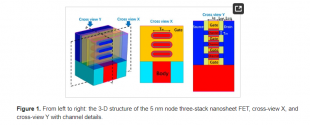The AMEC slides you posted mentioned they are designing PE Ti, PE Co MO TiN machine tools. PE likely means plasma etching.for AMEC, looks like they are really getting into MOCVD for SiC and GaN chips. Expecting huge growth here.
Nothing really new from what I can see on their etching section, so I assume that's just going to be continued progressive improvements. Their big investment is into CVD and ALD.
So I think they are still developing new etching tools.
SMIC doubled the floorspace at their FinFET fab. This was discussed here. My guess is they already had purchased the equipment before the latest US sanctions kicked in.The key question is with which kind of equipment SMIC is scaling up capacity? We can expect expanded capacity is in part due to yield improvement, but to scale up so much, from 100.000 to "hundreds of thousands", SMIC has to expand real capacity too, with new machines and new production lines at 7nm.
There are still no reports of Chinese 28nm litho tools being in production use anywhere. But this is likely less of a problem than it used to be.We know that 28nm has been conquered last year, but we know very little about localization on sub 28nm nodes. The big Chinese manufacturers remain mum on this, although we can speculate that the key ones NAURA, AMEC, Hwatsing, ACM Research, Kingstone, etc that officially reached fully 28nm coverage already last year or even earlier, are now actively validating/batch selling in the sub 28 nm range.
I think China should retaliate against attempts to renege on deals with regards to imported tool maintenance and spare parts supplies.If Chinese fabs cannot buy old US equipment, they will buy new Chinese equipment instead, so I really don't understand how this news can be "encouraging". To me, this just shows how desperate US officials are, at this point they can just cope hard, really hard.
But this seems unlikely to happen.
Intel tried to do 5nm with DUV for many, many years, and failed. They had to bite the bullet and buy EUV machines earlier than they wanted to. If SMIC manages to do this they will have succeeded where Intel failed.there is nothing secretive about SAQP. If SMIC can actually proficient do SAQP throughout its entire process, then it will be able to make N5 level chips without using EUV. But none of this is easy. These articles are written by people and are also interviewing people without industry knowledge. So, they are not helpful at all.
I think one of those US customers for SMIC used to be Qualcomm. Maybe Qualcomm needs to get in the Chinese blacklist similar to Micron since their chips have known backdoors in them.According to the latest data published in 2024, SMIC has almost no orders from US companies, while orders from Chinese companies account for 81%.
According to statistics, in 2017, the US market still accounted for 40% of SMIC's total revenue, by 2019 it had decreased to 30% and currently it is less than 16%.




